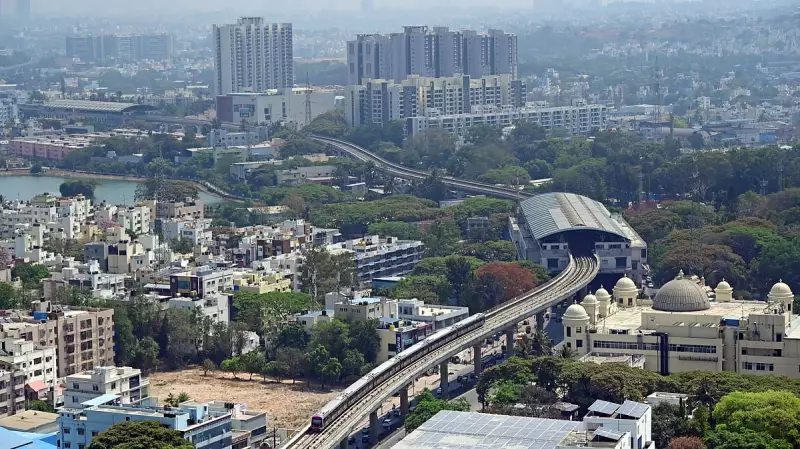
India's rapidly expanding megacities are facing a silent but devastating threat beneath their feet. Recent satellite data analysis reveals that significant land subsidence is putting millions of residents and critical infrastructure at risk across multiple urban centers.
The Alarming Evidence from Space
Advanced satellite technology has uncovered disturbing patterns of land sinking in several Indian metropolitan areas. Chennai is experiencing subsidence rates up to 25 mm per year, while Kolkata shows concerning downward movement of 18-20 mm annually. Even the national capital region isn't spared, with Delhi recording sinking rates between 11-17 mm each year.
These findings come from careful analysis of European Space Agency's Sentinel-1 satellite data processed by the European Space Agency's Grid Processing on Demand (GPOD) platform. The research, led by experts from IIT Bombay, presents a worrying picture of urban India's stability.
What's Causing the Ground to Sink?
The primary culprit behind this dangerous phenomenon is excessive groundwater extraction. As cities expand and populations grow, the demand for water skyrockets. Residents, industries, and agricultural operations are drawing water from underground aquifers faster than nature can replenish them.
Professor RAAJ Ramsankaran from IIT Bombay's Civil Engineering Department explains the mechanism: "When we extract groundwater, the water pressure in the soil decreases, causing the soil particles to compact and the ground to sink". This process creates permanent damage - even if groundwater levels recover later, the compressed soil cannot regain its original volume.
Urban development adds another layer to the problem. The weight of massive construction projects, including high-rise buildings and extensive infrastructure, puts additional pressure on already vulnerable ground.
Consequences for Urban Infrastructure
The implications of ongoing land subsidence are severe and far-reaching. Buildings, roads, bridges, and underground utilities face increasing structural stress. Metro rail systems, particularly elevated sections, become vulnerable to alignment issues and structural damage.
Water supply and sewage networks risk pipe damage and disruption. In coastal cities like Chennai, subsidence combined with sea-level rise creates a dual threat of flooding. The economic impact could run into billions of rupees in infrastructure repair and replacement costs.
Areas with high population density face the greatest risk. When the ground sinks unevenly, it can cause tilting or cracking in buildings, potentially leading to catastrophic structural failures during earthquakes or heavy monsoon rains.
Time for Comprehensive Action
Experts emphasize that addressing this crisis requires immediate and coordinated efforts. Better groundwater management is the most critical intervention needed. Cities must develop alternative water sources and implement strict regulations on groundwater extraction.
Professor Ramsankaran stresses the importance of integrating subsidence data into urban planning: "We need to consider these factors when planning new infrastructure projects and take preventive measures in vulnerable areas."
Regular monitoring using satellite technology and ground-based sensors can help track changes and identify high-risk zones. Early warning systems could alert authorities to accelerating subsidence rates before damage occurs.
The situation demands urgent attention from policymakers, urban planners, and citizens alike. Without decisive action, India's urban growth story could literally sink under the weight of its own development.





